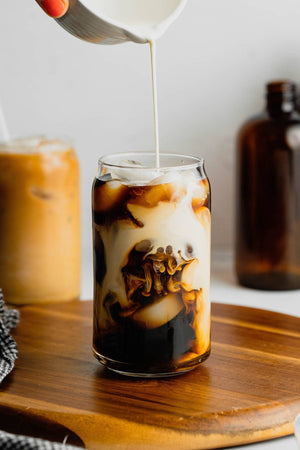Many people claim to love coffee, but how many truly understand the nuances behind their favorite brews? If you've been sipping your morning cup without considering how the roast profile affects your experience, you might be missing out on a world of flavor. It’s time to agitate the complacency of the casual coffee drinker!
The Essence of Coffee: More Than Just a Beverage
Coffee is more than just a morning ritual; it’s a complex and rich experience that can transform your day. From the first whiff of freshly ground beans to the last sip of your favorite brew, coffee holds a story of its own. Yet, many coffee enthusiasts remain unaware of the significant role roasting profiles play in shaping that story.
Understanding the intricacies of coffee can elevate your appreciation from a simple habit to an informed passion. Are you ready to delve into this world and truly become a coffee aficionado? Let’s embark on this journey together.
The Impact of Roast Profiles
The process of roasting coffee beans is where the magic happens. Roasting not only affects the flavor but also alters the chemical makeup of the beans, influencing the overall taste profile and experience of your cup. Let’s break down the different roast levels—light, medium, and dark—and their corresponding brewing methods.
Light Roasts: These beans are roasted for a shorter time, allowing them to retain more of their original flavors. Light roasts typically offer bright, fruity, and floral notes, showcasing the bean's origin. However, they may lack the body and depth that some coffee drinkers crave.
Medium Roasts: Medium roasts strike a balance between acidity and body. They often have a sweeter flavor profile with hints of caramel and nuttiness, making them a versatile option for various brewing methods.
Dark Roasts: Dark roasts are known for their bold, intense flavors and lower acidity. The roasting process caramelizes the sugars within the beans, creating a rich, robust taste that many coffee lovers find irresistible.
Understanding these profiles is crucial for choosing the right roast for your brewing method, as it can make or break your coffee experience.
Espresso: The Power of Dark Roasts
Why Dark Roasts Are Preferred
Espresso is all about intensity, concentration, and flavor. But why does the roast profile matter so much for espresso? The answer lies in the unique brewing process. Espresso uses pressure to extract flavors quickly, usually in under 30 seconds. Dark roasts are often preferred because their flavor compounds are more easily soluble, allowing for richer extraction in a short time.
During the roasting process, coffee beans undergo complex chemical reactions that transform them from their raw, green state into rich, brown beans. Darker roasts have a lower acidity compared to lighter roasts, which helps balance the sharpness of espresso's fast extraction. The oils that come to the surface during dark roasting also contribute to espresso’s signature crema—the creamy layer on top that coffee lovers cherish.
Adjusting Grind Size for Espresso
So, why does grind size matter? Espresso’s extraction time is incredibly short, and using a fine grind helps ensure the water interacts with as much surface area of the coffee grounds as possible, extracting flavor quickly. A coarser grind would result in an under-extracted shot—weak and sour. A fine grind paired with a dark roast maximizes flavor, producing the rich, concentrated shot of espresso that espresso drinkers crave.
Pour-Over Coffee: A Symphony of Flavors
The Precision of Pour-Over Brewing
Pour-over brewing emphasizes precision, clarity, and balance in coffee. The method involves slowly pouring water over coffee grounds, allowing for a clean, complex flavor. But why are light roasts particularly suited for pour-over brewing? Light roasts retain much of the coffee bean's original characteristics, including its natural brightness and acidity.
Since pour-over brewing doesn't use pressure like espresso, it allows for a more delicate extraction, highlighting the nuanced flavors of lightly roasted coffee beans. If you’ve been sipping on dark roasts through a pour-over method, you may be robbing yourself of the vibrant, fruity notes that lighter roasts can offer.
Light Roasts for Pour-Over
For pour-over fans, choosing light roasts allows the coffee's origin flavors to shine, whether that be fruity, floral, or herbal notes. The slow extraction process gives each of these flavors the time to develop, without being overpowered by the caramelization of sugars that happens in darker roasts. Many coffee aficionados argue that pour-over brewing is one of the best ways to appreciate the subtle intricacies of high-quality beans.
The Role of Medium Roasts in Pour-Over
Medium roasts offer a bridge between the acidity and brightness of light roasts and the depth of dark roasts. This balance is significant for pour-over brewing as it still highlights some of the origin flavors but with more sweetness and body due to the roasting process.
Medium roasts shine in pour-over brewing, offering coffee that is not too acidic but retains some of the vibrant notes of lighter roasts. This makes medium roasts an excellent choice for those who enjoy complexity but prefer a bit more sweetness and smoothness in their coffee.
French Press: Bold and Full-Bodied
Why French Press Loves Medium to Dark Roasts
The French press is known for creating a bold, full-bodied coffee. This immersion brewing method steeps coffee grounds in hot water for a longer period (typically 4-5 minutes), allowing the coffee’s oils and flavors to fully extract into the water. Medium to dark roasts work beautifully with French press brewing, as they offer a rich, robust flavor profile that can stand up to the longer extraction time.
Flavor Profiles in French Press
The French press brings out bolder, heavier flavors in coffee, making it ideal for those who enjoy a full-bodied cup. The immersion method allows more oils to be present in the final cup, and darker roasts—which are already oilier from the roasting process—have the opportunity to develop deep flavors like chocolate, caramel, and even smoky notes.
For those who prefer a more robust and hearty flavor, pairing a French press with a medium to dark roast is the perfect match. If you’ve only been using light roasts, consider switching it up and embracing the richness that a darker roast can bring to your French press experience.
Cold Brew: The Sweet Side of Coffee
How Roasting Affects Cold Brew
Cold brew has gained immense popularity for its smooth, mellow flavor. But why does cold brew require a specific roast profile? Cold brew coffee is made by steeping coffee grounds in cold water for 12-24 hours, a process that extracts fewer acids from the coffee, resulting in a less acidic, sweeter drink. Because of the slow extraction, the roast profile needs to complement this process without becoming too overwhelming.
Choosing the Right Roast for Cold Brew
Medium to dark roasts are best for cold brew. The extended brewing time emphasizes the coffee’s body and sweetness, making these roast levels the best choice. Medium-dark roasts highlight flavors like chocolate, caramel, and nuts—all of which are naturally brought out by the slow steeping process. The cold water reduces the bitterness often associated with darker roasts, resulting in a smoother, more balanced flavor profile.
For those who enjoy a rich, smooth coffee that is low in acidity and easy to drink, cold brew made from medium or dark roasts is an excellent choice. Have you tried making cold brew with light roasts? If so, you may want to reevaluate that choice for a more enjoyable experience.
FAQS About Coffee Roasting
-
What’s the Best Coffee Roast for Espresso?
Dark roasts tend to be the best for espresso. The high pressure and quick extraction process of espresso brewing pairs well with the deeper flavors of a dark roast, creating a concentrated shot that packs a punch without overwhelming bitterness. -
How Does Roasting Impact Flavor?
Roasting affects coffee by changing its chemical structure, leading to different flavor outcomes. As coffee beans roast, they lose moisture and undergo Maillard reactions, contributing to flavor development. Light roasts retain more of the bean’s original flavors, offering bright, fruity, and floral notes, while dark roasts emphasize the roasting process itself, delivering chocolatey, nutty, and caramelized flavors. -
Can I Use Light Roasts for Espresso?
While light roasts can technically be used for espresso, the high acidity and lighter body may not be the best match for most espresso drinkers. Espresso is typically enjoyed for its richness and intensity, qualities that light roasts often lack. Light roasts brewed as espresso can taste sour or overly acidic, which is why darker roasts are preferred for this method.
Are You a True Coffee Connoisseur?
Understanding the relationship between roast profiles and brewing methods can elevate your coffee experience from mundane to extraordinary. If you’ve been blindly drinking coffee without considering these factors, it’s time for a wake-up call.
The next time you pour yourself a cup, ask yourself: Am I truly enjoying this coffee, or am I just drinking it because that’s what I’ve always done? Dive deeper into the world of coffee roasting and brewing, and discover the flavors you’ve been missing.
Are you ready to explore what true coffee appreciation feels like? Don’t just drink coffee; savor it! Whether you prefer the bold richness of dark roasts in espresso, the vibrant nuances of light roasts in pour-over, or the smooth sweetness of medium roasts in cold brew, understanding how roast profiles enhance your chosen brewing method is the key to unlocking a world of flavor.
So, fellow coffee lover, let’s embark on this journey together. The world of coffee awaits—are you ready to taste the difference?

